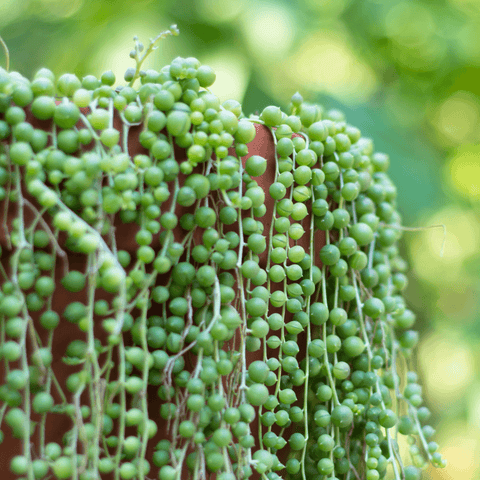Do you need a tropical, exotic houseplant? The Bird of Paradise plant has all the beauty of a tropical paradise in your own home, and with the right care, it will last for years. In this article, you'll learn the ins and outs of caring for this beautiful houseplant, from its location and soil requirements to the best pruning and pest control methods. With this guide, you'll be able to enjoy the lush beauty of a Bird of Paradise in your home for years to come.
What is a Bird of Paradise?
A Bird of Paradise (Strelitzia reginae) is an exotic houseplant native to South Africa known for its bright and showy blooms. Its common name refers to its shape and pattern, resembling the colorful plumage of a bird. It stands out in any indoor space with its lush, green foliage and vibrant flowers. The flowers have an orange-red center with blue and white tips, which makes them an eye-catching addition to any home. Bird of Paradise plants can reach up to 6 feet in height and width and live for years with proper care.
Caring for a Bird of Paradise
Caring for a Bird of Paradise is easier than you think, but with the proper techniques, you can create a beautiful, lively houseplant. For starters, it's important to remember that this plant thrives in indirect, bright light and a consistent temperature of at least 65°F.
Location
When finding the perfect spot for a Bird of Paradise, the key is to provide bright, indirect sunlight. These exotic houseplants prefer partial shade, so place yours near a window without direct sunlight. If you have a south-facing window, use a sheer curtain and filter the harshest light. Because Bird of Paradise plants thrives in tropical climates, so they'll also appreciate some extra humidity. Consider misting the leaves every day or using a humidifier in the room. Be sure to keep it away from air conditioning, heaters, and other temperature extremes, as this can be detrimental to the plant's health. With the correct exposure to light and the right temperature range, your bird of paradise will be sure to thrive.
Soil
When caring for a bird of paradise houseplant, selecting suitable soil is essential. The soil should be light and free-draining to allow adequate water and airflow. A potting mix with peat moss or a soilless potting mix is best. Avoid heavy soils that can become saturated or dry too quickly. Additionally, to boost your bird of paradise, add a slow-release fertilizer to the soil. This will help to promote healthy growth for your plant.
Watering
Watering a Bird of Paradise requires careful attention to detail. Make sure to water enough to keep the soil moist but not water-logged. This can be done by thoroughly and deeply watering the soil when the top 2-3 inches is dry. Lastly, cleaning your Bird of Paradise leaves can help reduce the chance of pests such as spider mites.
Fertilizing
When fertilizing a Bird of Paradise, it's essential to find the right balance between under-fertilizing and over-fertilizing. Generally, fertilizing your Bird of Paradise once every two months with a balanced liquid fertilizer is recommended. However, following the instructions packaged with your fertilizer is essential when fertilizing houseplants to prevent nutrient burn. In addition to liquid fertilizers, you can provide your Bird of Paradise extra nutrients by adding a slow-release fertilizer once every 6-8 months.
Pruning and Repotting
When caring for a Bird of Paradise plant, it is also essential to prune and repot it periodically. Pruning can help keep its size manageable and remove any dead or damaged leaves or stems. It is also necessary to repot a Bird of Paradise plant about every other year, as its roots will grow quickly. When repotting, it is essential to make sure that the new pot is slightly larger than the previous one, but not so big that it will damage the roots of the plant. Additionally, be sure to use fresh, high-quality soil, as this will help to ensure that your Bird of Paradise remains healthy and vibrant.
Pests and Disease Control
When caring for a bird of paradise houseplant, it is crucial to be aware of potential pests and diseases. Common pests of the bird of paradise include aphids, mealybugs, and scale. If a pest infestation occurs, it is essential to use a pesticide tailored explicitly to the type of pest. It is also vital to reduce the humidity of the environment to help discourage further infestation. Additionally, the bird of paradise is prone to several diseases, such as root rot, powdery mildew, and damping off, which can be caused by overwatering. To reduce the risk of these diseases, it is important to water the plant when the top layer of soil is dry, and to avoid wetting the foliage. By following these best practices for pest and disease control, you can keep your bird of paradise healthy and thriving.
Conclusion
In conclusion, a Bird of Paradise is a bold and beautiful houseplant with a tropical and exotic appearance. It requires plenty of light and warmth, well-drained soil, and regular watering and fertilizing. Pruning and repotting should be done carefully, and pest and disease control should be proactive if necessary. With the proper care and patience, you can bring the lush beauty of the Bird of Paradise into your home and enjoy its vibrant foliage for years to come.





Comments (0)
There are no comments for this article. Be the first one to leave a message!